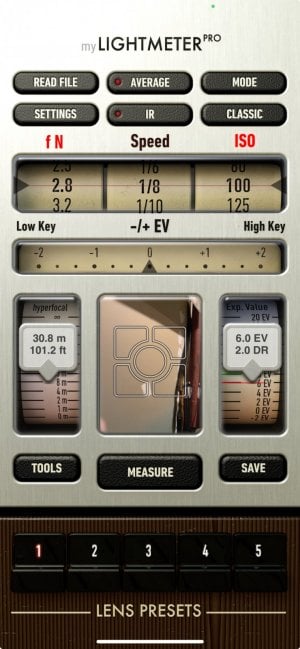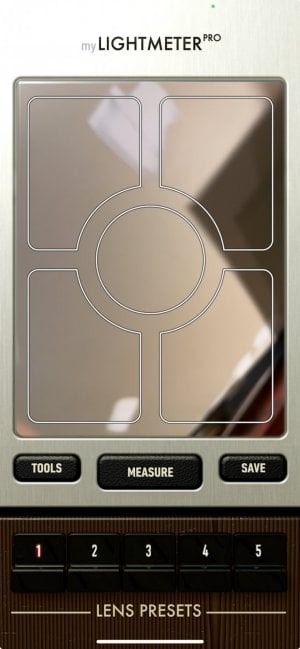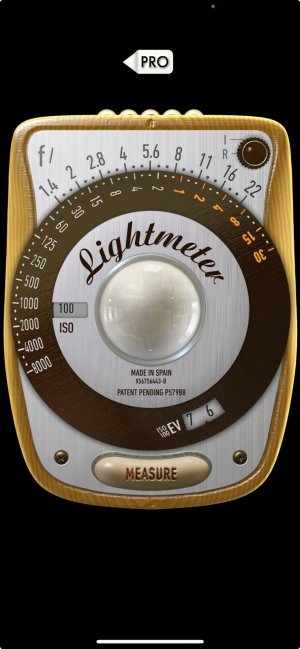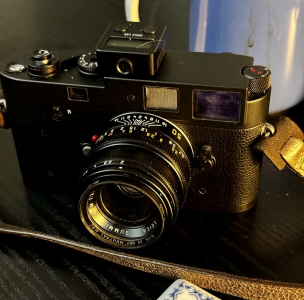AAlfano
Well-known
I grabbed one of those TTArtisan meters during the Black Friday sales.
The upgraded version fits nicely on a IIIf or IIIg. Looks neat enough, although the finish doesn't quite match the colour of the chrome of a Leica.
I thought it'd be good to replace my Weston II for low-light work. Sadly not: it gets very weird in low light and totally caps out at f/2 and 1/15 at 400ISO. It's accurate enough other than that, but like all reflected meters, you do have to be careful where you point it. For casual walk-arounds with a 50mm, it's good enough. I need a spacer to make it clear the rewind knob when it's in the second accessory shoe alongside an external VF on my Leica Ic, though.
I also have a spotmeter - a Sekonic one. Again, doesn't work in low light or with particularly dark subjects. I would test what its last useable reading is, but it decided to self-destruct; one of the glass elements in the viewfinder has come loose and it's been on the Project Shelf ever since.
I tried phone meter apps. Unreliable as hell. The one on my iPhone is right about 90% of the time. The one on my partner's Samsung makes absolutely zero sense and has never once produced an accurate reading.
Nothing beats a Weston. Nothing.
My experience with light meter apps on my iPhone has been very good. The problem with them is that the main iPhone camera is pretty wide and sometimes they read off of a wider area than desirable. What I do is hold the palm of my hand up in front of my subject in the light that I want to photograph and then take a reading off my palm. Sort of like using the phone light meter as an improvised incident meter. I have never gotten a bad exposure when I take the time to use this method. In fact, I've had such good results this way that I sometimes meter off my hand when using film cameras with built-in meters and digital cameras.
sojournerphoto
Mentor
I have a silver TT Artisan Mk1 meter and a black Mk2. Both match pretty well and match to the FM2n and ZI internal meters in reasonably comparable tests. The black one is currently sitting on the M-A and the silver on the side waiting for the M4 to return to service after it’s been serviced.
I quite like them - don’t get in the way, use it if I want as a check and cheap enough.
I’ve also got a complicated Sekonic with spot and incident. Useful if I’m using a tripod…
I quite like them - don’t get in the way, use it if I want as a check and cheap enough.
I’ve also got a complicated Sekonic with spot and incident. Useful if I’m using a tripod…
shawn
Mentor
Some of the apps let you meter a portion of the cameras view too. myLightmeter Pro does but you need to be in the Pro view to do it.My experience with light meter apps on my iPhone has been very good. The problem with them is that the main iPhone camera is pretty wide and sometimes they read off of a wider area than desirable. What I do is hold the palm of my hand up in front of my subject in the light that I want to photograph and then take a reading off my palm. Sort of like using the phone light meter as an improvised incident meter. I have never gotten a bad exposure when I take the time to use this method. In fact, I've had such good results this way that I sometimes meter off my hand when using film cameras with built-in meters and digital cameras.
Touch the image in the center of the Pro view...

and it will bring up that view as full screen...

And you can touch anywhere to set it more as a spot meter for that portion of the view.
Having said that I tend to use the classic view more as I like the exposure combinations shown.

It is a great app and the readings have always been fine for me. Cheap at $4.
Realistically though I tend to use a Pentax Spotmeter V or Gossen Luna-Pro SBC. The Spotmeter typically when I'm shooting 6x17 or 6x24 and the Gossen most of the rest of the time.
ChrisPlatt
Thread Killer
Never enough light meters... or light meter threads.
Yes indeed. I'd like to have one for every outfit, i.e. one in each camera bag.
Chris
Coldkennels
Barnack-toting Brit.
I've had such good results this way that I sometimes meter off my hand when using film cameras with built-in meters and digital cameras.
I do this with all meters if the subject's a bit tricky or has unusual tonal values (snowy scenes, etc.); I know the palm of my hand is a consistent Zone VI all year round, so it's easy to get a reliable reading for any scene with that as a reference.
Incident meters: who needs 'em?
View attachment 4830159
It is a great app and the readings have always been fine for me. Cheap at $4.
That is the EXACT app on my partner's Android. It is wildly incorrect and completely unreliable, and I have absolutely no idea why. If she hadn't already gone to bed I'd grab her phone and investigate further. I assumed the app was just hot garbage; it could just be some quirk of her model of phone.
shawn
Mentor
I'd check the settings and make sure none of the calibrations were changed? Other than that I don't know, it has worked great on several different iPhones for me.That is the EXACT app on my partner's Android. It is wildly incorrect and completely unreliable, and I have absolutely no idea why. If she hadn't already gone to bed I'd grab her phone and investigate further. I assumed the app was just hot garbage; it could just be some quirk of her model of phone.
ranger9
Well-known
Most people usually don't, but the TTArtisan meter is small enough and cheap enough to make sense as an occasional-use purchase. I have one, but it's not my favorite... my first choice is an even cheaper Chinese-OEM meter by Reflx Labs (yes, that's how they spell it.) In fact, I made a video comparing them.Problem is. I really don't need a light meter
In case anyone's wondering, the reason the photo world is suddenly awash in small, inexpensive, surprisingly accurate light meters is that the chip-making industry got the hang of making light sensors that are highly consistent from one unit to the next (which wasn't the case with selenium, CdS, or early silicon photodiode sensors.) Chip sensors such as the Vishay VEML7700 come off the production line so nearly identical that individual calibration or component selection is no longer required; just add a few resistors and capacitors as shown on the data sheet, run the whole thing into an inexpensive microcontroller such as the Silicon Technologies ST-M32, stir in some code, and for a few bucks wholesale you have a very usable instrument; all you need to do is design whatever kind of user interface you think will appeal to your prospective customers.
x-ray
Mentor
It’s getting hard to find working reflective meters that are accurate and reliable. Like most of you I’ve accumulated several vintage meters that are my favorite and a box full of duds that make nice paper weights.
Now that George Melton at Quality Light Metric has retired I’m not sure if there’s anyone else rebuilding and calibrating these oldies. George totally rebuilt my Weston V by putting a new cell in, remagnitized the galvanometer and put a calibrated low/high range flap on. I swapped out the dial for a more legible Euro Master dial and use it frequently.
George also calibrated my Luna Pro and converted it to modern batteries and rebuilt and calibrated my prized Weston Ranger 9 meter. If you’re not familiar with the Ranger 9 you need to check them out. Unfortunately George retired about the same time I found a mint Ranger 9 that I was going to get rebuilt as a spare.
I also have a couple of Sekonic L28 / Norwood Director variants that are still good and carry one from time to time.
Then throw in my trusty Pentax Spotmeter V and a couple of Minolta V meters that are great incident meters and flash meters. When I was working my V’s were my main meters.
Now that George Melton at Quality Light Metric has retired I’m not sure if there’s anyone else rebuilding and calibrating these oldies. George totally rebuilt my Weston V by putting a new cell in, remagnitized the galvanometer and put a calibrated low/high range flap on. I swapped out the dial for a more legible Euro Master dial and use it frequently.
George also calibrated my Luna Pro and converted it to modern batteries and rebuilt and calibrated my prized Weston Ranger 9 meter. If you’re not familiar with the Ranger 9 you need to check them out. Unfortunately George retired about the same time I found a mint Ranger 9 that I was going to get rebuilt as a spare.
I also have a couple of Sekonic L28 / Norwood Director variants that are still good and carry one from time to time.
Then throw in my trusty Pentax Spotmeter V and a couple of Minolta V meters that are great incident meters and flash meters. When I was working my V’s were my main meters.
stephen_lumsden
Well-known
With android phones they can over expose by 3 ev. There is a calibration function in the app where you can input about -3 ev compensation (I have the app and it ok after calibration) and then it's acceptableI do this with all meters if the subject's a bit tricky or has unusual tonal values (snowy scenes, etc.); I know the palm of my hand is a consistent Zone VI all year round, so it's easy to get a reliable reading for any scene with that as a reference.
Incident meters: who needs 'em?
That is the EXACT app on my partner's Android. It is wildly incorrect and completely unreliable, and I have absolutely no idea why. If she hadn't already gone to bed I'd grab her phone and investigate further. I assumed the app was just hot garbage; it could just be some quirk of her model of phone.
panerai
Well-known
Meter showed and played around with it a bit. Solid. Lines for F stops could have been engrave a minute higher, but I just have to move the ISO inner dial a little to line it up a tough more. Probably does matter.
Another nice feature is the clip for the hot shoe has 3 positions and right justified prevents it from getting in the way of the film advance lever
Can also use it on my digital Panasonic LX3 in manual mode. Will have to see how that works.
Happy with the price and only took 11 days to receive
DON
Another nice feature is the clip for the hot shoe has 3 positions and right justified prevents it from getting in the way of the film advance lever
Can also use it on my digital Panasonic LX3 in manual mode. Will have to see how that works.
Happy with the price and only took 11 days to receive
DON
hap
Well-known
more like a Chop Shophmm...? what's an "op shop"?
G
kshapero
South Florida Man
former of the herd
Newbie
My first light meter outside of the one in the camera I then had was a Sekonic Micro leader. Simple but accurate and easy to use in low light. I next bought a Sekonic L28c2. I really liked it. Had a couple of attachments besides the incident dome. Lastly, I bought a Gossen Luna Pro SBC I had lusted for a long time. I also got some of the attachments. I never used any of the attachments except to experiment with the spot attachment. I really did like it. But really, most of the cameras I have use built in meters that do the job quite well and I only need a light meter for my folders since my Mamiya Super Press 23 needs a good cla on all the lenses. I also need a new back for myself as at 82 I can't carry much really heavy stuff and then there is the problem of development. Expensive and the wife objects to long periods without the bathroom.I recently bought a Luna Pro SBC I didn’t need, with two good meters in rotation as it is, one Gossen, the other Sekonic 308.
But what I’ve learned with some purchases is that there’s more to them than meets the eye, on the screen. This new meter is a brutalist device in a leather case designed to be dragged over rocks up the Jungfrau. It uses a unique zero needle exposure determination, allowing then accessory readings to assess whether the subject‘s reflectivity fits the dynamic range of the film. I love this meter. Used it in the garden at the weekend.
Al
I really liked your original post. Very philosophical..
Alas the tedium of retirement and aging. LOL
Share:
-
This site uses cookies to help personalise content, tailor your experience and to keep you logged in if you register.
By continuing to use this site, you are consenting to our use of cookies.


